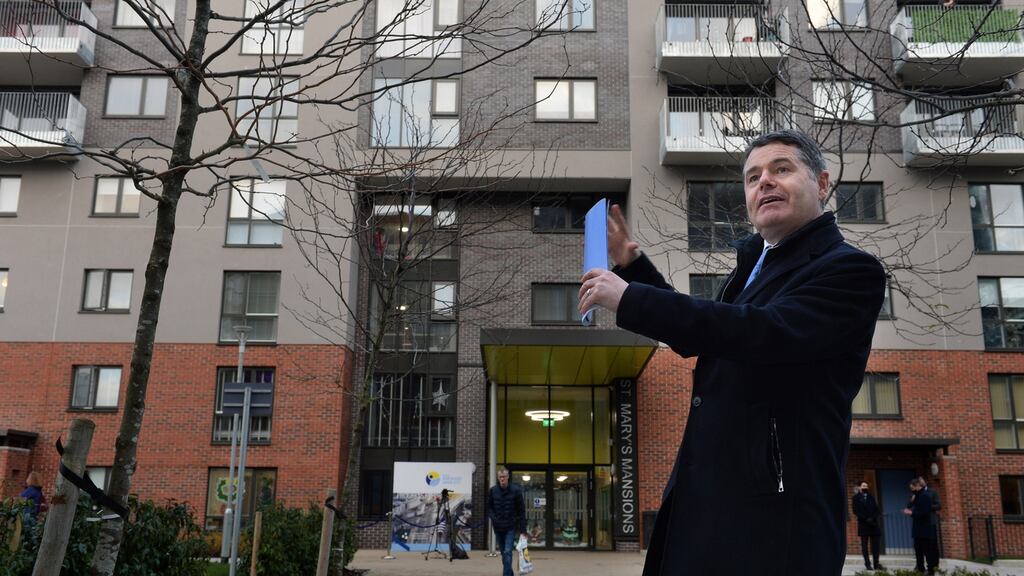Nobody noticed (understandably – it was Tuesday, the day the Government decided on the third lockdown), but the Minister for Finance Paschal Donohoe this week launched the annual report of the North East Inner City Implementation Board.
All State bodies produce annual reports, which hardly anyone reads. They are waved through Cabinet every week, along with military promotions and ambassadorial appointments, the flotsam and jetsam of official documentation. But the NEIC people call it a “progress report”, and policymakers, community activists and those interested in breaking the cycle of disadvantage in areas suffering from deprivation should read it and become familiar with the project, how it works – and how they might replicate it.
The North East Inner City project is an example of how the State can make a real difference in people’s lives and also how the State can learn from its failures in tackling social disadvantage and deprivation.
The area – roughly speaking, east of O’Connell Street, south of the North Circular Road, North of the Liffey, east of the docks – has been a byword for poverty, social dysfunction, crime and lack of opportunity for generations. It was the epicentre of the first phase of the murderous feud between the Hutch and Kinahan gangs, when armed gardaí patrolled the streets at night and stood sentry on street corners during the day.
Watershed
But that feud and the deaths that accompanied it turned into a watershed for the area. Then taoiseach Enda Kenny – after attending the funeral of a local murder victim – took a very personal interest and knocked some heads together. The result was the North East Inner City Implementation Board, charged with implementing a report drawn up by industrial relations expert Kieran Mulvey, which set out a path to reverse the decades of decay and put the area on a sustainable path to social and economic improvements. Its successor is the strategic plan for the area, 2020-2022.
It’s a work in progress, of course, but the progress has been impressive. There are mentoring programmes, assistance schemes for schools, community development and rejuvenation projects, physical and infrastructural improvements, micro-grants, major projects and sustained efforts to build links between some of the State’s highest-profile corporate titans, housed nearby in their glass and concrete castles, and the people who walk past them every day. The area is fairly but effectively policed, with gardaí on bikes a more common sight nowadays than armed officers in SUVs. Nobody in the community thinks that things are perfect; nobody involved in the project thinks they have the job done. But they have made a very substantial impact in an area where nothing seemed to work before.
It helps that the local TD is the Minister for Finance. But often it's not a question of money; the annual budget of the NEIC is just €6.5 million, a relatively small sum
Two things make a difference. The first is the political and administrative backing the project enjoys. There is a triangle of three people – board chairman Michael Stone, secretary general of the Department of the Taoiseach Martin Fraser and Paschal Donohoe – who are committed to the success of the project. All three have pretty demanding day jobs (Stone founded and leads a large construction and engineering company); all three devote significant time and energy to the NEIC project. From Donohoe comes the political and financial backing; from Fraser the ability to cut through administrative inertia and bureaucratic blockages; from Stone the on-the-ground leadership and relentless energy that has driven progress since his appointment four years ago. “I’ve never seen anyone like him,” says one person closely involved. “When someone says, ‘that can’t be done,’ he takes it as a personal challenge.”
Well-meaning
Stone’s leadership has ensured that the project has not been another series of ideas dreamed up by well-meaning people remote from the area; it is driven by engagement with the community and by immersion in their lives, needs and concerns.
Of course it helps that the local TD is the Minister for Finance. But often it’s not a question of money; the annual budget of the NEIC is just €6.5 million, a relatively small sum. Many of the projects and initiatives operate on a micro-level. Stone and his colleagues are willing to fund any good idea; they are also quick to cut off funding if it’s not working. They are fiercely committed, but unsentimental.
Often it’s a question of how the money is spent, rather than how much. Decisions are made quickly, results monitored. And it is that thorough and genuine engagement with the community – and an understanding of its difficulties and how they can be addressed – that makes the money invested in the NEIC such outstanding value.
It’s been a tough year, of course. The pandemic brought the area the same challenges it brought to everywhere, and often they were felt in more acute ways. But the project has stuck doggedly to its business. There is a lot more to do, and the area still faces enormous difficulties. But the progress is real and tangible and has changed many lives.
Could the same approach work elsewhere? One of the things that is slightly troubling about the project is that it gets results by doing things differently to other public agencies. Perhaps the personnel aren’t replicable – after all, there isn’t a minister for finance in every constituency, there isn’t a Michael Stone or a Martin Fraser available everywhere. But the model might be replicable, even on a limited basis. Surely a similar infrastructure could be set up for, say, three or four more of the country’s most underprivileged areas.
The template is there. It should be followed.









